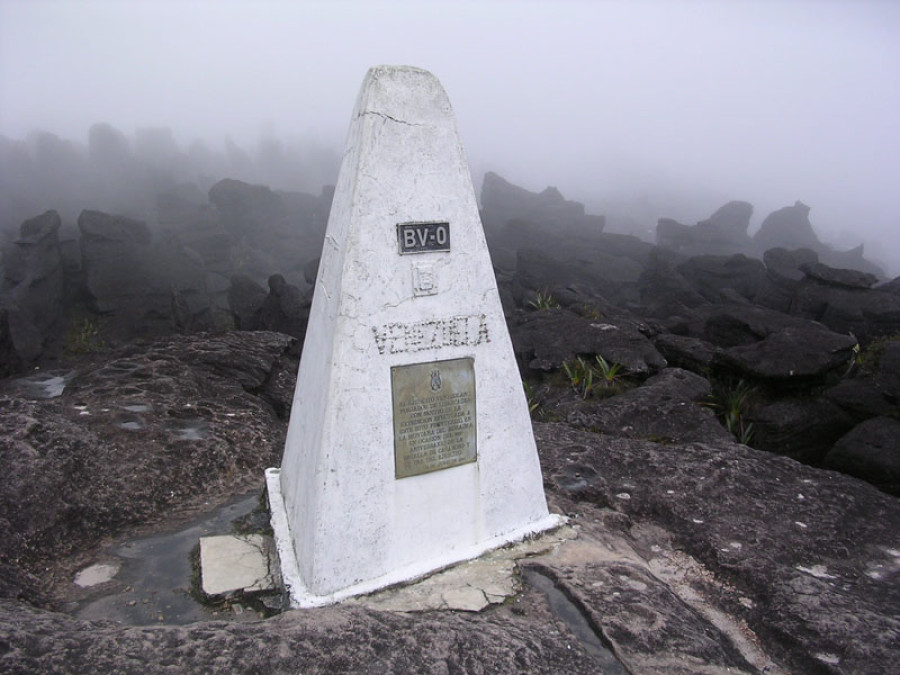Columns
Nepal-India-China tri-junction
The most important elements to settle the border issues are dialogue, discussion, friendliness, neighbourliness and mutual understanding.
Buddhi Narayan Shrestha
A tri-junction or a tri-border area is a geographical point at which the borders of three countries or sub-national entities meet. China has 16 tri-points with its neighbouring countries, India seven and Nepal two.
Shyam Saran, former Indian ambassador to Nepal and foreign secretary of India, has written in an article entitled 'As Nepal paints itself into a corner on Kalapani issue, India must tread carefully' in The Indian Express dated June 12, ‘Buddhi Narayan Shrestha, who has been responsible for putting out justification for the new claims against India, is unable to deny it either. But he now says that the trijunction at this end has not been determined and that notionally it would be pillar number zero on the boundary! This is the first time one has heard of the concept of a “number zero border pillar”! This is ex post facto justification and the dishonesty behind it is glaring’.
International practice
It is pertinent to mention that there are currently 157 international tri-points all over the world. There is a practice to mark the tri-junction point as ‘zero’ number. For example, Venezuela-Brazil-Guyana have a seven-foot-tall marker on the tri-point where the borders of the three countries meet. It bears a bronze plaque and the geographical marker BV-0, referring to the zero point between the national boundaries. One side of the marker is clearly marked with the word ‘Brasil’ and the nation’s national shield, and the other side says ‘Venezuela’. The Venezuelan side also bears a bronze plaque and the geographical marker BV-0 referring to the zero point. The Guyanese side bears some barely legible and crudely done lettering.
China-Russia-Mongolia have set the position of their junction point by a trilateral agreement signed in Ulaanbaatar in 1994. The agreement specifies that a marker is to be erected at the eastern tri-point called Tarbagan-Dakh. At some tri-points, the latitude, longitude and altitude are stated, like at the tri-point of the borders of Norway, Sweden and Finland. This is the technical fact based on the boundary principle adopted across the world. Some diplomats and politicians might not have heard about the technically related tri-junction. Erecting a tri-point pillar is a global practice, and it must have the serial number zero. The three countries involved should participate and cooperate equally in all respects.
So far as the tri-junctions on the Nepal-India-China border are concerned, two tri-border points need to be established at Nepal's north-eastern and north-western corners at Jhinsang Chuli (altitude 7,483 metres) and Limpiyadhura (altitude 5,532 metres) respectively.
Nepal and China signed a boundary agreement in 1960 and a treaty was signed in 1961. The borderline was demarcated in 1961-62. After the completion of the demarcation amicably, the first boundary protocol was signed by the plenipotentiaries of the two countries in 1963. It was renewed in 1979 and 1988. A Nepal-China joint boundary committee is working to renew the protocol for the third time. It is to be noted that the demarcation has not yet been completed for the tri-junctions at either end of Nepal to be erected. Border pillar number one has been erected at Tinkar Pass in Darchula and number 79 at Tiptala Pass in Taplejung.
Saran has written, ‘A Nepali diplomat has repeated this same specious argument, “Given the situation in 1961, Nepal and China fixed pillar No 1 at Tinkar Pass with the understanding that pillar number zero (trijunction of Nepal, India and China) would be fixed later”. [Shrestha] has not adduced any evidence that this indeed was the 'understanding' reached with China in 1961’.
In this aspect, Saran seems to be correct. Studying the Nepal-China boundary maps prepared during 1961-62, one can see that the boundary line has already been drawn to a hillock about 4 km northwest of Tinkar Pass. Now it has to be extended further north to Lipulekh Pass and then north-westward catching the watershed range ultimately to Limpiyadhura. It is to be noted that the map has been chalked up to nearly 3 km north of Lipulekh Pass. It may be due to the understanding with China, as Saran has stated.
Bilateral talks
Nepal and India have not only diplomatic, political and economic relations, but also social, cultural and people-to-people ties, as Nepal also has with the northern neighbour China. The most important element to settle the border issue is dialogue, discussion, friendliness, neighbourliness and mutual understanding. This has been stated by former Indian ambassadors to Nepal from Deva Mukherjee to recently retired Manjeev Singh Puri. In the same way, Nepali diplomats from Bhekh Bahadur Thapa to Deep Kumar Upadhyay have said that friendly negotiations could resolve the issue.
In this regard, the date and venue should be fixed for the bilateral talks between Nepal and India as soon as possible. It has to adopt the spirit of Article 5 of the 1816 Treaty of Sugauli to delineate and demarcate the origin of the Kalee/Mahakali river. Once this matter is resolved, the issue of the Kalapani area will be settled forever. China must be involved to erect the tri-junction point where the Nepal, India and China borders meet.
***
What do you think?
Dear reader, we’d like to hear from you. We regularly publish letters to the editor on contemporary issues or direct responses to something the Post has recently published. Please send your letters to [email protected] with "Letter to the Editor" in the subject line. Please include your name, location, and a contact address so one of our editors can reach out to you.




 12.12°C Kathmandu
12.12°C Kathmandu















